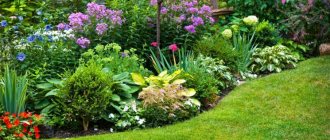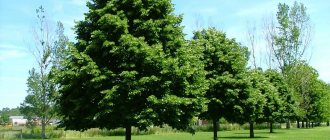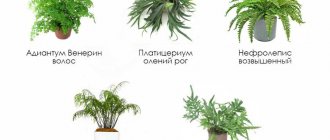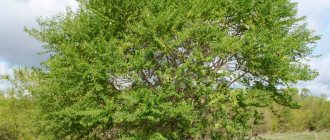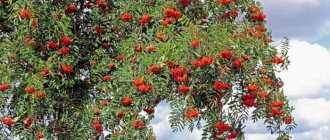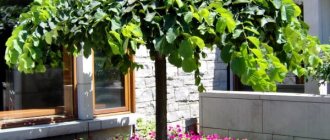The desire for beauty is part of human nature. People constantly surround themselves with things that give aesthetic pleasure. Stylish furniture is placed in the houses, photos and paintings in elegant frames are hung on the walls, and the interior design is complemented with a variety of figurines and figurines.
There are a large number of types of ornamental plants, each of which has its own characteristics. It is one of the most diverse botanical families. Depending on the variety, these flowers are used both for street decoration and for decorating rooms. Our website contains a catalog that includes a solid list of plants that can be ordered at a competitive price.
Growing fresh flowers is quite a difficult job that requires a responsible approach. Knowledge of various subtleties about crops, species and varieties is necessary. After all, each of them has its own requirements for climate, lighting, fertilizing, water and soil composition (ready-made soil mixtures can be bought in specialized stores).
Such flowers require constant care, without which this creation of nature will die. The leaves will gradually turn yellow and dry out, the petals will lose their unique color, and the stems will become thinner. In the end, a small miracle will simply wither without care and love. Therefore, gardening is considered a rather complex science.
If you live in a city like Moscow or another large metropolis, you are unlikely to have a lot of time that you want to regularly devote to caring for fresh flowers. It is much easier and more practical to decorate your home by ordering artificial plants with delivery, the prices of which are much lower than the cost of living compositions. You can always buy ornamental plants on our website.
What are ornamental plants - list
Designers decorate landscape projects with them; some ornamental plants have medicinal properties.
Interesting read: fruits and berries and subtropical plants.
Ash maple
This tree belongs to the deciduous family, popularly called “American maple.” Widely distributed in Europe, it has been growing in Russia since 1796, propagated with seeds brought from Canada. Unpretentious, can grow anywhere: in the forest, in a park area and even on asphalt, it grows quickly and calmly withstands frosts down to -60 degrees, reaches a height of up to 20 meters, and begins to reproduce by seeds after 5 - 7 years.
The trunk is short and fragile; in strong winds and snowfall, branches break, the root system is easily damaged, which is why large trees often fall on cars, buildings and people. The dense crown blocks out the sunlight, making it difficult for grass and shrubs to grow under it. The leaves are beautiful, but fallen ones are considered poisonous; some people have terrible allergies during pollination; they are pollinated by the wind.
Variegated maple Flamingo
This type of maple was bred in Holland in 1976. The shrub has a spherical shape, at the age of twenty the height reaches 5 meters and the width up to three meters. It does not bloom, but all the beauty lies in the lush attire of beautiful leaves: in the spring there is a light pink edging along the edge of the leaf, it is for this shade that the maple received the name “Flamingo”, by autumn the color changes to creamy yellow, fruits grow on them.
The leaf shape is oval, pointed with a cut along the edge, attached to the branch with long petioles. For planting, you need fertile, loose, moist soil; it tolerates drought and frost well; it can be propagated by dividing the bush. It is light-loving, feels good in partial shade; to preserve the leaves of a bright pink hue, it is necessary to cut them down at the root in the fall in 3-4 years. Used in landscape design and for hedges.
Kalina Buldonezh
Viburnum Buldonezh is one of the varieties of ordinary viburnum, but it does not reproduce and is popular for its decorative appearance. It blooms from May for a month, the flowers are large white balls collected from small flowers. It grows in height up to 3 - 4 meters, the crown is spreading, easy to care for, loves moist soil. In autumn, the leaves stand out with their lush green hue.
Like simple viburnum, Bulldonezh has many beneficial properties: tinctures from the bark cleanse blood vessels and restore blood pressure, strengthen the immune system and are taken for colds, and rejuvenate facial skin. Propagated by dividing the bush.
Viburnum rugosafolia
A shrub up to three meters high, not picky about the soil, light-loving, drought-resistant, grows slowly. The green leaves are rough and shiny. It blooms with small flowers with a light gray or gray-white tint. The fruits are not edible, they are red at first and turn black when ripe. Propagated by cuttings, dividing the bush and seeds.
Features : forms buds in autumn and blooms in spring. Disadvantages : cannot be planted in lowlands.
Kalina Charles Lamont
A low shrub, 2.5 to 3.5 meters high, belongs to the deciduous family; fragrant white-pink flowers are collected in racemes. The berries ripen in October and remain on the bush all winter. Thanks to its high decorative qualities, it will decorate any garden.
Features : high yield, does not require care, resistant to diseases, high medicinal properties and decorative qualities. Disadvantages : it rarely bears fruit, regular watering is required during drought, frost resistance is -23 degrees.
Hydrangea oakleaf, paniculata
Flowering ornamental plants include oakleaf hydrangea, paniculata, known throughout the world. The shrub grows up to two meters in height, blooms all summer with cone-shaped inflorescences, which are collected from small flowers, the leaves are rough. Today, many shades of hydrangea have been developed.
Features : tolerates frost and drought well, abundance of varieties, long flowering, resistant to diseases and pests. Disadvantages : if planted incorrectly, it will die, does not tolerate nitrogen fertilizers.
Sakura
Landscape designers often use the Japanese style in their work: a composition of sakura. Not a single ornamental tree can compare with the oriental beauty. Breeders have developed many ornamental varieties that can be grown in Russia, all the way to the North. The tree is not tall, about three meters, and begins to bloom in the third year in May with white, pink and purple flowers.
During flowering, a fabulous picture appears: practically no branches or leaves are visible on the tree - pink spherical trees and the ground covered with pink petals underneath them. The leaves are golden pink in spring and turn malachite green in autumn. It grows slowly; it can grow in a planted place for 500 years. Decorative sakura is planted for beauty: in park areas, in urban areas, in the private sector, and in country houses.
Features : resistant to pests and diseases, does not require special care, a novice summer resident can easily grow it from small cuttings.
Chaenomelis white
An ornamental thorny shrub grows up to 1 meter high, the leaves are oval, dark green with a shine, blooms profusely throughout the month and has several shades of flowers, similar to apple blossoms. The popular name is quince; the decorative variety does not bear fruit. It is better to plant on the sunny side, on light loamy soil, drought-resistant, and requires watering in hot weather. Used to decorate the garden and for hedges.
Disadvantages : can get a bacterial burn, be sure to treat it against scale insects and aphids in spring and autumn, cover the seedlings well for the winter for the first year. Can be propagated by pruned branches.
Henomelis bicolor Orange Train, red
The popular name of this shrub is Japanese quince. It stands out with its beautiful coral hue, the branches are sinuous, scattered on the sides, other qualities are the same as other varieties: it does not require special care, looks great when in color and looks decorative with fruits that are suitable for eating, compote and jam.
It grows in height up to one meter and can please the owner with repeated flowering. This quince variety is suitable for decoration and for fruit trees.
Features : fast growth and bright color require fertilizing and regular watering.
Willow of Babylon Crispa, Globular, Willow Hakuro Nishiki
- Willow Babylonian Crispa
: This is both a small tree and a shrub, an ornamental deciduous plant. It is a variety of ordinary willow with a cone-shaped crown about two meters high. All the beauty is in the leaves: unusually shaped, dark green on one side and gray-green on the other, curled in a spiral in the shape of a rose, blooms with thin earrings. Unpretentious in care, the first year must be covered. In a garden design composition, the leaves look chic; they are used as decoration in city parks, public gardens, and in local areas. - Willow spherical:
has another name - willow, brittle. The tree grows up to 20 meters, but there are dwarfs, and forms a spherical top. It will perfectly decorate any garden; with the help of professional pruning and weaving of branches, you can create an unusual shape, use it in composition with other shrubs, and are perfect for hedges. Moisture-loving, best combined with a pond or lake. Does not require care, grows independently. - Willow Hakuro Nishiki:
popular name is all-leaved willow, exotic shrub 2 - 3 meters high, undemanding to soil and care, narrow-shaped leaves of white - green color. A sought-after shrub among designers, with the help of professional pruning it can be made into any shape, an excellent decor for the garden and is suitable instead of a hedge, and can be combined with other plants.
Sill Pink Frost
Perennial ornamental plant 90 cm high, loves sun and moisture, but feels good in the shade. Leaves with uneven edges are dark green in color, blooms in a bright pink hue from August to September, seedlings are suitable for group planting, mainly used for decoration on the shore of a reservoir.
Cyperus, Papyrus, Sitovnik
Plant of the sedge family. Swamp plant.
A perennial plant with smooth stems reaching a height of 70-120 cm. The leaves are grouped into umbels at the ends of the stems. Green foliage and multi-flowered cyperosa are mainly cultivated. Flowers with small, unsightly, whitish flowers.
Propagated by cuttings, dividing old plants, and less often by seeds.
The soil should be loose, light, rich in nutrients - for green, for poor - for colorful. Can be grown at temperatures of 12-150 C.
It is used as an aquarium and a house plant grown in a pot, which must be in a bowl of water.
Planting ornamental plants
Ornamental plants should be grown in the following order:
- Planting time:
spring and autumn. It is better to buy ornamental plants for the garden in a specialized nursery; they take root well. - Place for planting:
prepare a planting hole 2 times larger than the root of the seedling, make up to 30 cm of drainage at the bottom from expanded clay, gravel or crushed stone. Then the hole is filled with prepared soil. - Soil:
If the soil is dry and poor, you need to enrich it with humus to maintain moisture and nutrients. To lighten wet and heavy soil, you need to add sand.
Coniferous and heather plants are prone to soil with the addition of acidic peat; you can purchase special soil, or collect rotted pine needles in a pine forest.
Root preparation, planting
If the seedling is in a container, it must be taken out with a lump of earth and kept in water for several minutes before planting. Plant in a prepared hole at the same depth as in the container, sprinkle with earth and tamp around the trunk and water generously with warm water with the addition of root. Saplings with an open root system are planted with material to wrap the root.
Chlorophytum
Chlorophytum is an evergreen, leafy ornamental plant of the lilac family.
The height of the plant reaches about 40 cm, and the ascending shoots are 80-120 cm. The leaves are long, linear, light green. The speckled form, which has white stripes along the midrib of the leaves, is the most decorative. The flowers are whitish, with sparse ornamentation. Propagated by rosettes of leaves formed on descending shoots soon after wilting, but after they have taken root, rarely when transplanted.
It grows and develops better at temperatures of 12-14 C and high air humidity, but can be grown at higher temperatures. It is a shade-tolerant plant, but lighter coloration of colorful leaves is innate in plants placed in a well-lit location. Water flows abundantly in summer; watering is reduced in winter.
It is used as a plant for hanging baskets, sometimes for arranging.
Where and how to buy ornamental plants
Planting can be done in autumn and spring, of course it is better in spring, the root system will not freeze and the seedling will take root better. You need to purchase planting material from an ornamental plant nursery.
When buying a seedling in a container, pay attention: if the seedling with soil is easy to pull out of the container, this indicates a recent transplant, which means the survival rate is low; reconsider the roots: they come out above the ground or through holes, which means they need nutrients or there is not enough space; a good seedling has small roots coming out.
For a seedling with an open root system, the roots should be covered with moist, dense soil; a healthy root has small spots, and it is difficult to remove the soil from them. All planting material must have living buds.
Ornamental plants for the garden create beauty. It is impossible to imagine a holiday without flowers, or a residential area without landscaping.
Introduction
Flower plants have not only aesthetic, but also great sanitary value and protect cities and towns from smoke, exhaust gases, dust, etc.
Many plants have phytoncidal properties. Parks, gardens, avenues and boulevards are special arteries that purify the polluted air of the city.
Planting trees and shrubs significantly smoothes out the amplitude of temperature fluctuations, increases air humidity on hot days, and also has reclamation and water conservation value.
Green spaces are especially important for combating various industrial and road noise.
A set of solutions for ecological construction includes the transformation of natural forest areas located near large settlements into landscaped forest parks. Great importance is attached to landscaping the areas of factories, farms, children's institutions, etc. New residential areas are accepted by the commission only after landscaping work has been carried out there. All this is one of the most striking indicators of the growth of the country’s cultural level.
Fresh flowers are needed all year round. They are used to decorate green spaces, as well as to obtain cuttings from open and closed ground, which are used for various types of arrangements (bouquets, baskets, compositions, etc.).
Many flowering plants have not only aesthetic, but also utilitarian value, i.e. they are used in the food, petroleum and medical industries.
Unusual options for the garden: ferns and grasses
Decorating your site with plants is the best option with great possibilities for the landscape. Choose early, fragrant and long-flowering species. Luxurious spring species with spectacular foliage are very beautiful. There is a whole group of species that do not bloom or have small, unattractive flowers. But their leaves are the most beautiful and an interesting decorative form of the bush. Often such species become the main decoration of plantings.
The oldest plants that do not have flowers are ferns.
They come in low and high. Bush species are consistently decorative and original throughout the season. It is better to plant them in separate bushes among low plants. The exotic appearance and beauty of their leaves is emphasized in this case. Small ferns are placed in the shade and they are the main decorations for rockeries. Planting and care when growing in central Russia does not take much time and effort. If you choose the right site, then ferns take a long time to grow, expand, and even some reproduce by seeds. Grass-like plants and grasses are often used in modern flower beds. With their narrow leaves they gather in bunches and form bushes, thickets and turf. Ornamental grasses create a vibrant style in flower beds. Rockeries are decorated with light-loving low bushes. Ponds are also decorated with cereals.
What trees are used for spectacular compositions:
- Dwarf and short;
- Up to three meters - medium height;
- Tall - up to six meters.
The tallest ones are planted in the background. Then medium-sized plants are planted in the open area. The short ones are placed in front.
Balsam
This decorative flower is incredibly popular due to its unpretentiousness, almost constant flowering and easy propagation.
People call it affectionately the sparkle, impatiens or evergreen. Having appeared in Europe at the beginning of the 16th century, it was subsequently quite quickly spread throughout the world.
Its branched, succulent stems, depending on the variety, reach a height of fifteen to fifty centimeters. And the fleshy leaves with wavy edges are green-red, green or bronze in color.
Rhododendron
These shrubs and trees are divided into deciduous, semi-deciduous and evergreen. According to various sources, this genus has more than a thousand species, including azaleas, popular among gardeners.
Literally, “rhododendron” is translated as “tree with roses” or “rose tree.” The reason for this name lies in the fact that azalea flowers look very much like roses.
This plant loves the climate of the coastal sea or river zone, therefore in the wild Rhododendron is most common in the south of China, the Himalayas, Japan and North America.
Some species can reach a height of more than three hundred centimeters, and the flowers vary in shape, size and color.
It blooms in large clusters of flowers that have an incredibly beautiful pink or purple hue.
Evergreens - a complete list with descriptions and recommendations from a gardenerVertical gardening - from idea to implementation, choosing options according to budget and attractiveness (photo + video)
- Vertical flower beds - basic principles and rules for choosing plants and arranging a suburban area with your own hands
It requires warm temperatures and therefore can freeze in winter. And only a few varieties are adapted to the climatic conditions of the middle zone.
Tamarisk
Another lovely ornamental plant, shown in the photo, is beautifully called Beadweed or God's tree. Tamarisk took its scientific name from the Tama Riz River, which flows in the Pyrenees Mountains.
Bisernik mainly grows in deserts and sand dunes. It can be found in Africa, Asia and southern Europe.
This tree has more than fifteen species, and in the Caucasus it rises to a height of over six hundred meters. Deciduous or evergreen shrubs grow in a bush-like manner, reaching a height of one and a half to twelve meters. Their trunk, as a rule, is no thicker than half a meter.
Its crown has many twig-like stems, on which small leaf blades that look like scales are alternately located. Their color can be light or dark green, as well as emerald blue.


